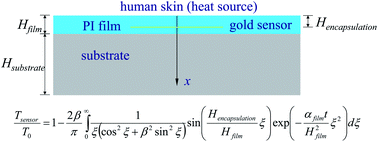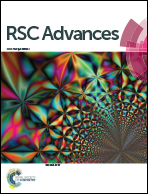Thermal analysis of ultrathin, compliant sensors for characterization of the human skin
Abstract
Recent work establishes that ultrathin, stretchable sensors can enable high precision thermal characterization of the skin, with capabilities for spatial mapping, in forms that avoid irritation, thermal or mechanical loads on natural behaviors, or motion artifacts. The results have potential for use in cardiovascular screening, skin hydration sensing, and local skin heating and thermal therapy. A theoretical framework for understanding the thermal behavior of these types of sensors is critically important for interpreting the data and identifying optimized designs. This paper presents an analytical model, validated by the finite element method and experiments, for this purpose. The sensor temperature is obtained analytically in terms of material and geometric parameters. A scaling law for the sensor response time shows that the normalized time depends only on the normalized sensor location and normalized thermal properties. A simple, analytic formula for the response at long times is also obtained. The results provide strategies for reducing the sensor response time and thereby for improving the device performance.


 Please wait while we load your content...
Please wait while we load your content...